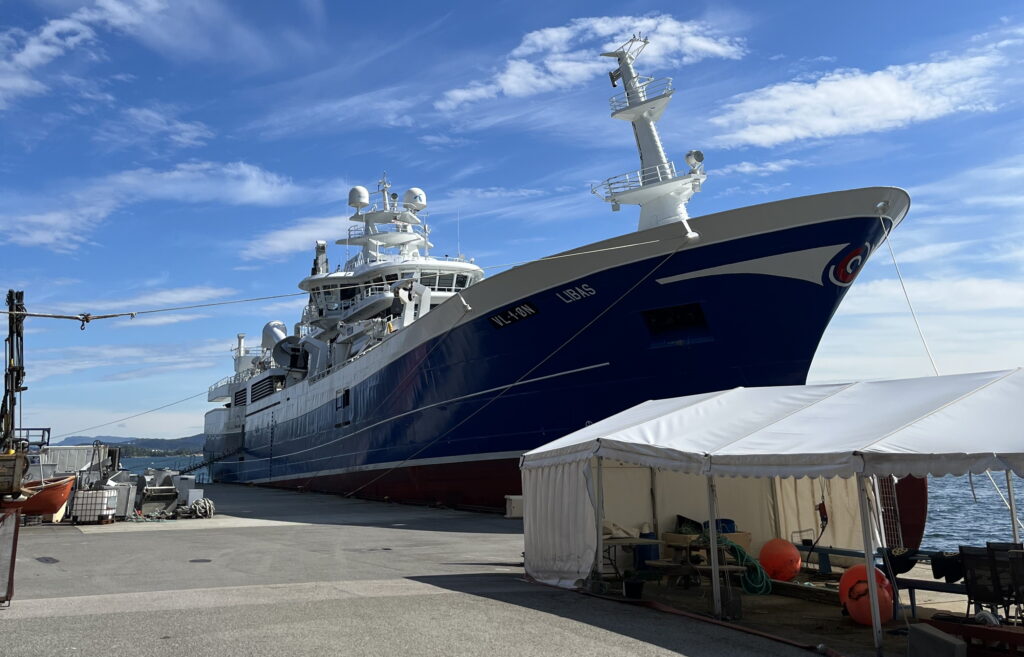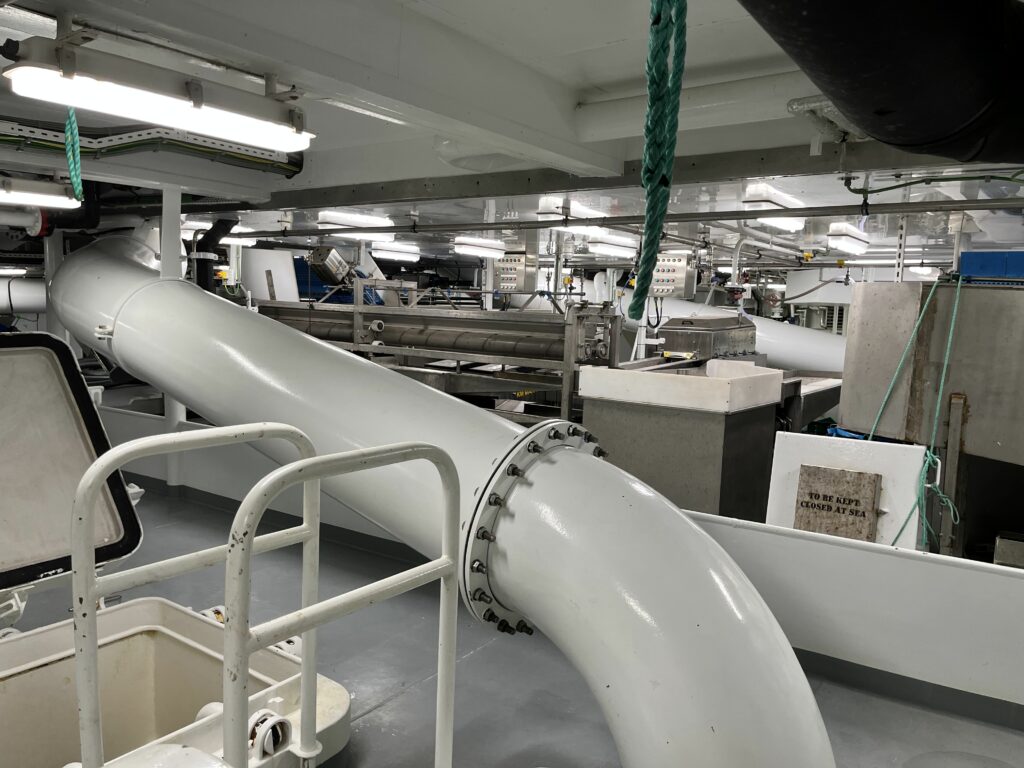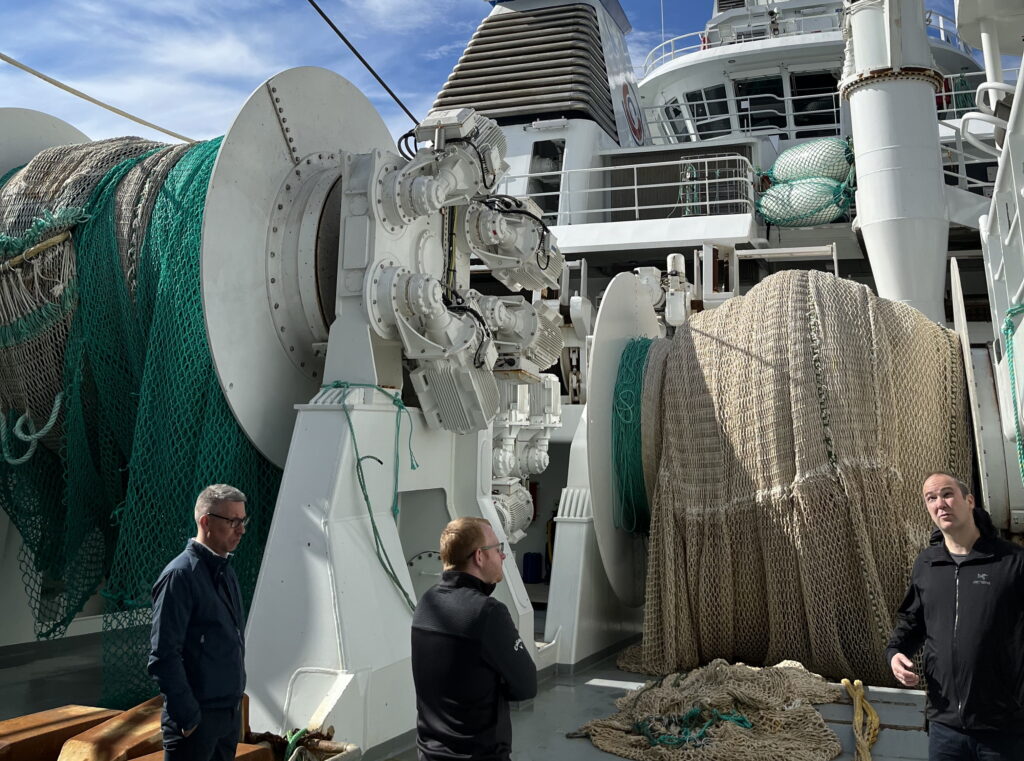

The need to reduce carbon emissions in response to climate change is something being felt across all sectors of the economy, and the UK fishing industry is no exception. Following on from the Fisheries Innovation Scotland (FIS) Vessels of the Future conference, FIS and the Fishmongers Company’s Fisheries Charitable Trust invited James Duthie Jr, a fisherman and naval architect from Fraserburgh, to embark on a knowledge exchange to Norway in order to learn from their innovations in reducing vessel CO2 emissions and explore its application to the UK fleet. Here James outlines his visit and some of the lessons learnt:
Norway has long been at the forefront of tackling vessel carbon emissions and for many years have been building liquefied natural gas (LNG) fuelled, hybrid and even fully electric ships. Now their fishing fleet are following suit, and I was able to visit the world’s first LNG fuelled fishing vessel “Libas”, complete with a 350m3 LNG tank that is capable of providing a lower carbon alternative to the diesel normally used on board.

This was followed by a session at Wartsilä, one of the maritime sector’s top engine manufacturers, who are developing engines that can run on LNG, methanol, ammonia and hydrogen, all of which can produce fewer emissions than their diesel counterparts. This meeting then led on to a discussion with Sustainable Energy, a Norwegian catapult centre, whose primary purpose is to help develop the technologies required to enable the maritime industry in reducing emissions from ships, notably modelling their operations on UK catapult projects.

The day was finished off with a visit to Energy House, a test centre that is used by a number of industry partners to test the latest emission reduction technologies. Here I was able to see the installation of a Warstilä ammonia engine. They will soon be commissioning the unit and slowly ramping up testing.
A final meeting with Salt Ship Design, a leading ship designer in Norway was held to discuss the technical challenges of moving towards “net zero” in the maritime sector.
Having seen the great strides being made in Norway, the question now turns to how this can be applied to the UK context. Our fishing industry faces unique challenges that do not always apply to merchant shipping sector. Technology and policy to date has focused on larger ships and short sea routes, with regular opportunities to refuel, something that is often not the case for fishermen. The next step, I would argue for the fishing industry, is to focus on designing vessels capable of running on alternative fuels in order to then allow accurate comparison to existing diesel fuelled vessels against a number of benchmarks, the meeting of which would signal the opportunity to transition.
Technical
A technical benchmark will determine if the solution can actually be achieved. We are now seeing the development of engines capable of running on alternative fuels, however, it is imperative that we assess their suitability to fishing vessels specifically.
Regulation
The concept designs can then be benchmarked against the current rules that fishing vessels are built, operated and crewed under. From this we would be able to see what rules are lacking and what needs to be changed to make this a reality.
Financial
A financial benchmark will determine if the solution is even feasible for a fishing vessel owner. Reaching a point at which alternative fuels match or out compete existing fuels will be essential in incentivising uptake from skippers and vessel owners.

All of the above benchmarks are inherently linked to on another. Choosing the wrong technical solution can have serious financial implications. Any particular technical solution may then require further regulation and rules to be applied. In most cases this calls for increased costs.
Given fishing is particularly vulnerable to market forces, and that consumer demand is particularly price dependent, any moves to pass on increased costs to consumers is likely to prove particularly difficult, making the uptake of this technology highly contingent on establishing long term viability and cost effectiveness.